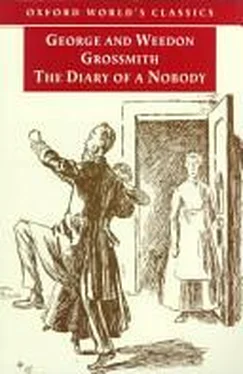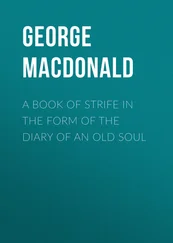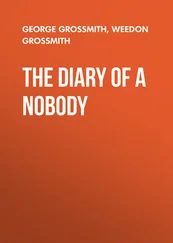Those lampooned in The Diary of a Nobody for their painstaking recording of the banal and trivial include Dearman Birchall, a cloth merchant, William Macready, actor-manager of the Drury Lane Theatre in the 1840s, and Henry Crabb Robinson, a barrister and war correspondent for The Times . For instance, Dearman Birchall records under 19 January 1882: ‘Fancy dress ball to open the entertaining room at Barnwood. I was dressed as Mahomet Bel Hadgi, the father, and Emily as the mother of Lindaraja. We were not recognised at first,’ 16 16 Faber & Faber Book of Diaries , edited by Simon Brett (London: Faber & Faber, 1987), p. 23.
a calamity with which Pooter would have wholeheartedly sympathized. Macready’s entry for 29 July 1837 reads: ‘Walked to Oxford St, took cab home. The cabman insisted on 2/– [fare] which I resisted; and on his persistence I made him drive me to the police office, where a deposit was made for the measurement of the ground. I walked home.’ 17 17 Ibid., p. 271.
Compare this with Charles Pooter’s plight at the hands of the hostile cabman after the East Acton Volunteer Ball. Then there was Henry Crabb Robinson who records how on 27 August 1864 ‘The day was devoted to looking over old letters – a necessary task and the sense of its being a duty almost its only inducement.’ 18 18 Ibid., p. 308.
Again one doesn’t have to imagine too hard to visualize Pooter spending a day doing likewise.
A more sophisticated antecedent is the Revd James Woodforde’s Diary of a Country Parson 1758–1802 . Woodforde kept an almost daily record of his largely uneventful life during this 44-year period, commenting on such cataclysmic events as the storming of the Bastille alongside coverage of what he’d had for breakfast that day. But even Woodforde wasn’t averse to dropping in the kind of observation that can only be described as Pooterish. On 2 May 1788 (just over a hundred years to the day before Pooter’s arrival) he reveals: ‘My little cart was brought home from being painted and now looks very smart indeed. It is of a very dark green.’ Charles Pooter with his enthusiasm about painting the bath red (27 April, year 1) would have been proud of such an entry. Nor is The Diary of a Nobody the last in the line. Out of a host of descendants the two most important late twentieth-century examples are Sue Townshend’s Adrian Mole and Helen Fielding’s Bridget Jones, both of whom have appeared heading hugely popular best-selling spoof diaries firmly in the Pooter tradition of naïve hero at a loss to explain the mundane nature of their own tightly defined world.
Other Victorian preoccupations of the time which are expertly caricatured in The Diary of a Nobody include bicycling (Cummings’s entire life-story appears to be replayed through Bicycle News , which nobody else reads), spiritualism, introduced to the Pooter household by the dread hand of ‘Mrs James of Sutton’, and the Aesthetic Movement, the leading counter-culture tendency of the time. A revolt against the trend towards standardization and mass production, the Aesthetic Movement railed against the strict moral standards of the time, rejoicing in the tag ‘art for art’s sake’. The Aesthetic Movement developed in the late 1870s around the ideas of the critic and essayist Walter Pater, and soon attracted that most flamboyant and dandyish of late nineteenth-century figures, Oscar Wilde. Long before The Diary of a Nobody Wilde was being sent up in Punch in cartoons and skits. In 1881 Punch editor Frank Burnand wrote a comedy called The Colonel which included a character, Lambert Stryke (played by Beerbohm Tree) who was a send-up of Oscar Wilde. That year George Grossmith began playing the poet Reginald Bunthorne complete with knee-breeches à la Wilde and a wig with one single white lock à la Whistler in Gilbert & Sullivan’s Patience . Another Wilde influence on The Diary of a Nobody emerged from the poet’s taste in interior design. In 1884 Wilde moved into a house on Tite Street, Chelsea, and with the aid of James Whistler and the architect Edward Godwin painted almost everything white – the front door, hall, stairs – and, as Wilde explained, ‘different shades of white in the dining room’. It was not the sort of thing people did in those days, and so in The Diary of a Nobody Charles Pooter sees himself as being particularly risqué when he paints much of the house – flower pots, the servant’s bedroom furniture, the coal-scuttle, ‘the backs of our Shakespeare’ and, most absurdly, the bath, in red.
There are other Aesthetic Movement influences evident in The Diary of a Nobody . As Raymond Chapman explained in The Victorian Debate: English Literature and Society 1832–1901 , 19 19 Raymond Chapman, The Victorian Debate: English Literature and Society 1832–1901 (London: Weidenfeld & Nicholson, 1968).
‘touches of frivolity became permissible even in the suburban villa’, and so even though Pooter is unlikely to be conversant with the latest movements in art, and Carrie likewise, the ubiquitous ‘Mrs James of Sutton’ almost certainly is. It is she who is responsible for Carrie’s flirtations with Aesthetic touches such as writing on dark slate-coloured paper with white ink and draping the mantelpiece with toy spiders, frogs and beetles, an obviously impractical art-for-art’s-sake deed which baffles Pooter who ‘preferred the mantelpiece as it was’.
Throughout its trenchant satire and rich comedy The Diary of a Nobody also manages to paint a memorable portrait of the Victorian class system. Pooter is a terrific snob, even though he has little to be snobbish about. As far as we know he has attended no great school, has little cultural awareness (he never visits an art gallery, reads anything other than the Daily Telegraph , or takes any interest in learning) and is only a lowly clerk when we first meet him. Yet he continually shows contempt for those supposedly lower down the social scale and, determined to keep his distance from such people, is mortified when Farmerson, the ironmonger, turns up at the Mansion House Ball (7 May, year 1). ‘I simply looked at him, and said coolly: “I never expected to see you here.” ’ Farmerson then has the gall to know one of the sheriffs. ‘To think that a man who mends our scraper should know any member of our aristocracy!’ In one stroke Pooter displays admirable ignorance: sheriffs are appointed and no more aristocratic than clerks. And in any case, how could a ‘member of the aristocracy’ have gone to school with Farmerson?
Most of all Pooter’s position is defined by his address. If he were Perkupp he might live in sumptuous surroundings such as Kensington or Chelsea. Instead, as one of Perkupp’s underlings, he is obliged to inhabit that most hellish of English locations, suburbia. Pooter’s suburban hell is Holloway with which the Grossmiths were well acquainted, having been raised in Hampstead, two miles west, and having attended the North London Collegiate School in neighbouring Camden Town. Holloway was just one of scores of erstwhile London villages which grew rapidly following industrialization from being an insignificant Middlesex hamlet, separated from London proper by a few miles of farms and fields, to being part of the new London sprawl covered with rows of houses, roads, schools, shops and warehouses. The capital’s population rose accordingly. As David Thorns showed in Suburbia , 20 20 David Thorns, Suburbia (London: Paladin, 1972), p. 38.
‘During the second half of the 19th century the population of London’s outer ring grew by approximately fifty per cent in each of the ten-year periods between the census of 1861 and that of 1891.’
Читать дальше












